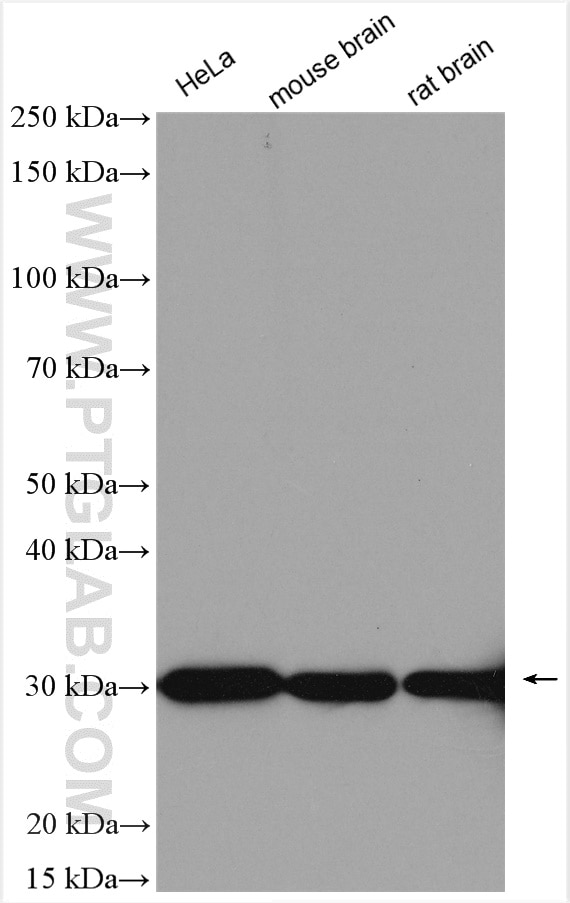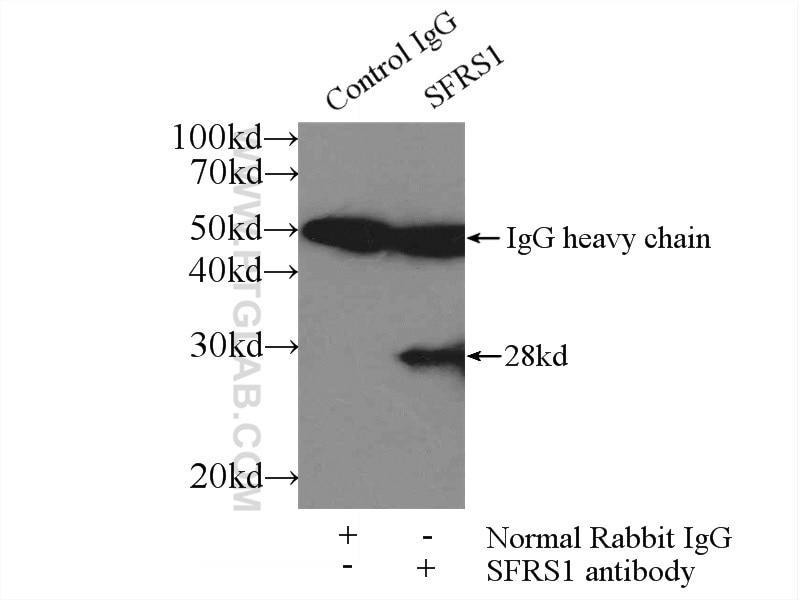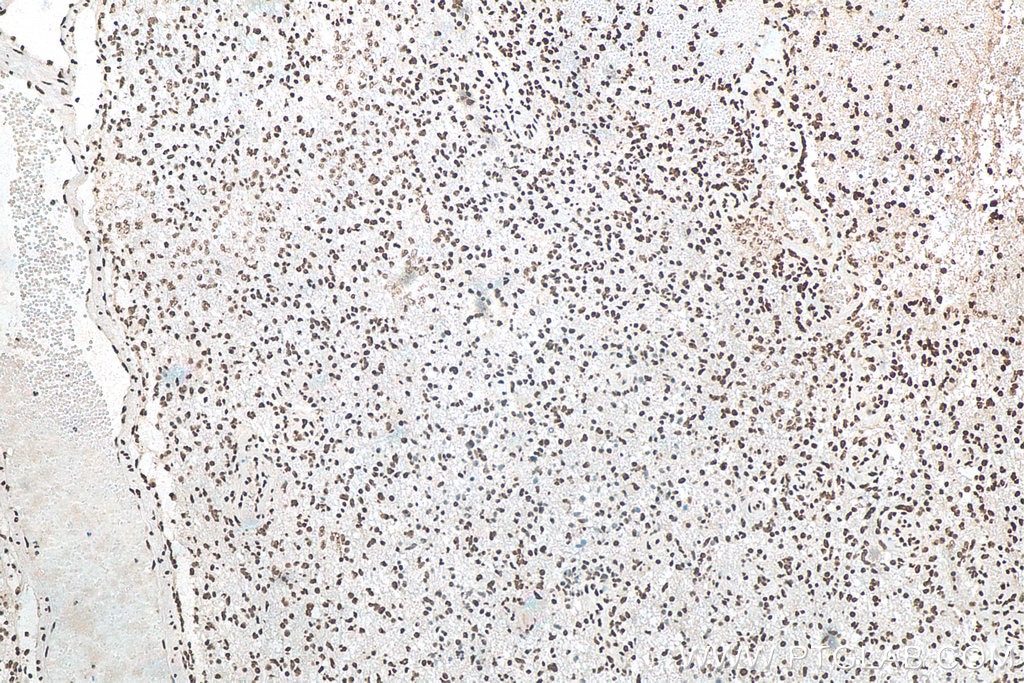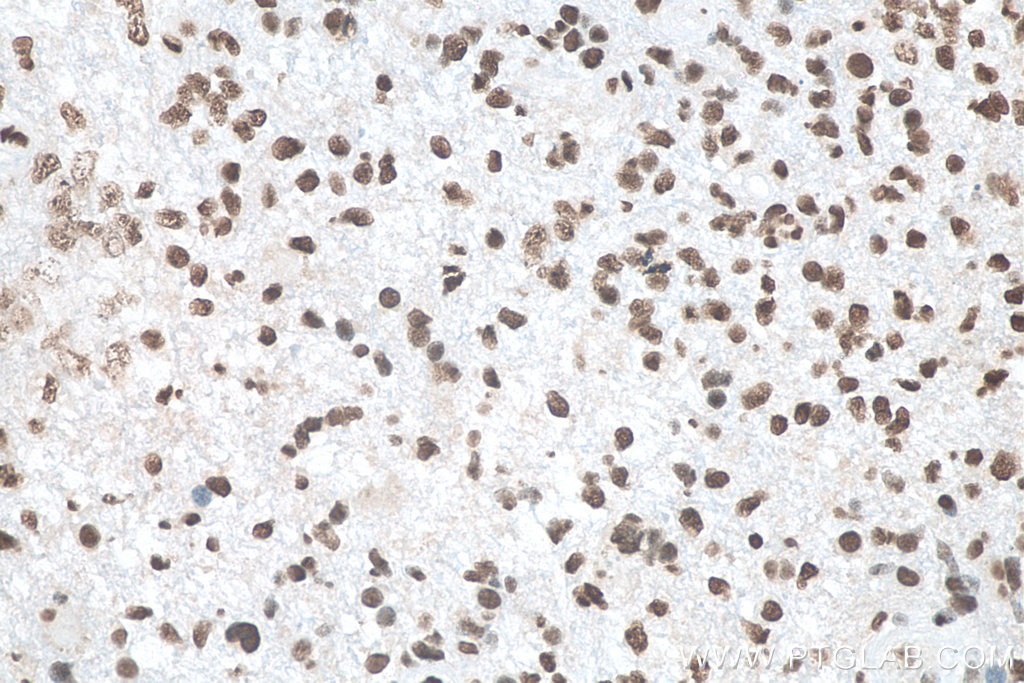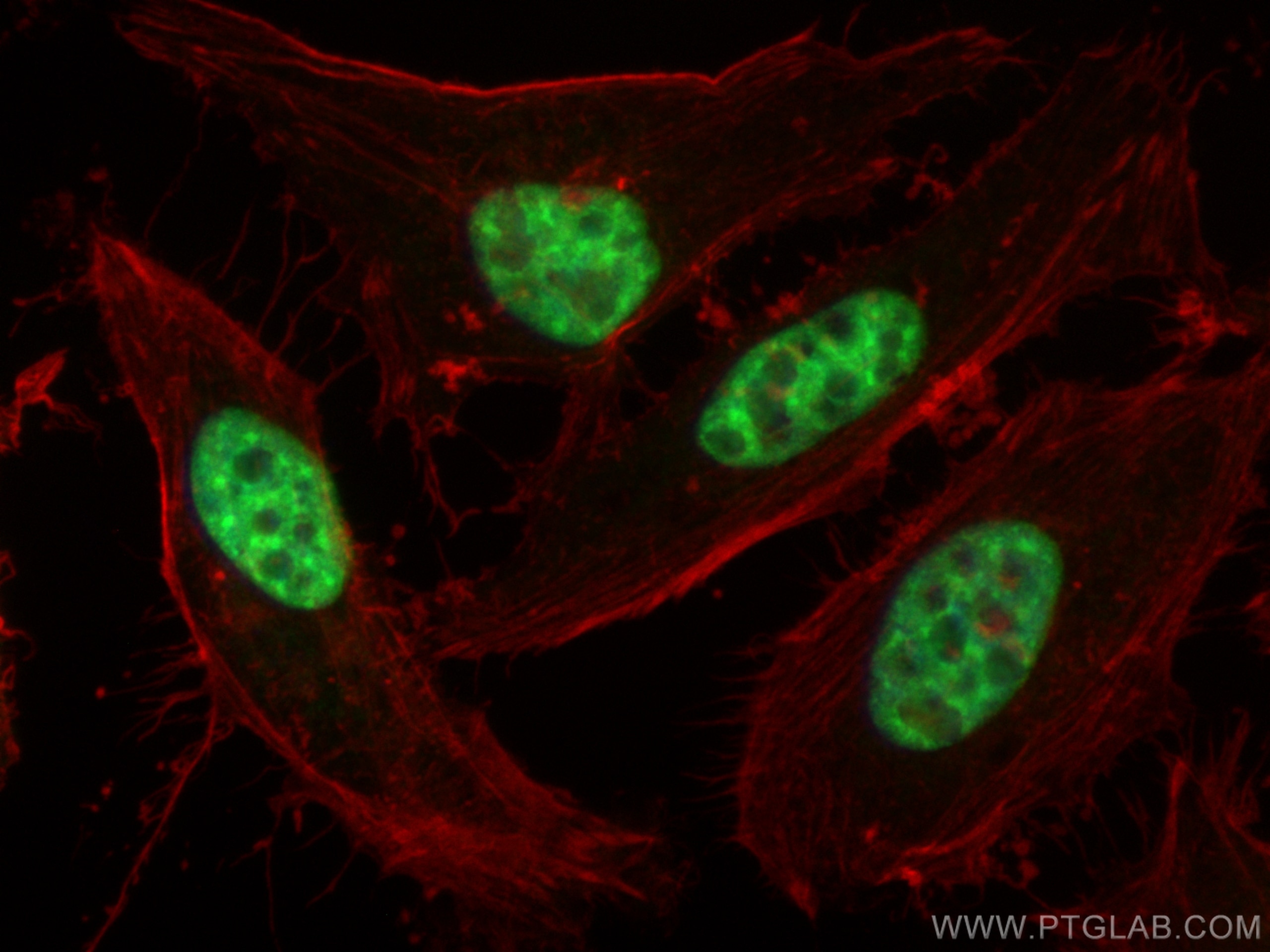Validation Data Gallery
Tested Applications
| Positive WB detected in | HeLa cells, mouse brain tissue, rat brain tissue |
| Positive IP detected in | mouse brain tissue |
| Positive IHC detected in | human gliomas tissue Note: suggested antigen retrieval with TE buffer pH 9.0; (*) Alternatively, antigen retrieval may be performed with citrate buffer pH 6.0 |
| Positive IF/ICC detected in | HeLa cells |
Recommended dilution
| Application | Dilution |
|---|---|
| Western Blot (WB) | WB : 1:1000-1:9000 |
| Immunoprecipitation (IP) | IP : 0.5-4.0 ug for 1.0-3.0 mg of total protein lysate |
| Immunohistochemistry (IHC) | IHC : 1:50-1:500 |
| Immunofluorescence (IF)/ICC | IF/ICC : 1:50-1:500 |
| It is recommended that this reagent should be titrated in each testing system to obtain optimal results. | |
| Sample-dependent, Check data in validation data gallery. | |
Published Applications
| KD/KO | See 5 publications below |
| WB | See 33 publications below |
| IHC | See 2 publications below |
| IF | See 10 publications below |
| IP | See 3 publications below |
| CoIP | See 2 publications below |
| RIP | See 8 publications below |
Product Information
12929-2-AP targets ASF/SF2 in WB, IHC, IF/ICC, IP, CoIP, RIP, ELISA applications and shows reactivity with human, mouse, rat samples.
| Tested Reactivity | human, mouse, rat |
| Cited Reactivity | human, mouse, rat, pig |
| Host / Isotype | Rabbit / IgG |
| Class | Polyclonal |
| Type | Antibody |
| Immunogen |
CatNo: Ag3626 Product name: Recombinant human ASF/SF2 protein Source: e coli.-derived, PGEX-4T Tag: GST Domain: 1-248 aa of BC010264 Sequence: MSGGGVIRGPAGNNDCRIYVGNLPPDIRTKDIEDVFYKYGAIRDIDLKNRRGGPPFAFVEFEDPRDAEDAVYGRDGYDYDGYRLRVEFPRSGRGTGRGGGGGGGGGAPRGRYGPPSRRSENRVVVSGLPPSGSWQDLKDHMREAGDVCYADVYRDGTGVVEFVRKEDMTYAVRKLDNTKFRSHEGETAYIRVKVDGPRSPSYGRSRSRSRSRSRSRSRSNSRSRSYSPRRSRGSPRYSPRHSRSRSRT 相同性解析による交差性が予測される生物種 |
| Full Name | splicing factor, arginine/serine-rich 1 |
| Calculated molecular weight | 248 aa, 28 kDa |
| Observed molecular weight | 28 kDa |
| GenBank accession number | BC010264 |
| Gene Symbol | ASF/SF2 |
| Gene ID (NCBI) | 6426 |
| RRID | AB_2187211 |
| Conjugate | Unconjugated |
| Form | |
| Form | Liquid |
| Purification Method | Antigen affinity purification |
| UNIPROT ID | Q07955 |
| Storage Buffer | PBS with 0.02% sodium azide and 50% glycerol{{ptg:BufferTemp}}7.3 |
| Storage Conditions | Store at -20°C. Stable for one year after shipment. Aliquoting is unnecessary for -20oC storage. |
Background Information
SFRS1, also named as ASF, SF2, SF2P33, SFRS1 and ASF-1, belongs to the splicing factor SR family. It plays a role in preventing exon skipping, ensuring the accuracy of splicing and regulating alternative splicing. SFRS1 interacts with other spliceosomal components, via the RS domains, to form a bridge between the 5'- and 3'-splice site binding components, U1 snRNP and U2AF. Isoform ASF-2 and isoform ASF-3 act as splicing repressors. This antibody can recognize all the 3 isoforms(28kd,33kd and 22kd) of SFRS1.
Protocols
| Product Specific Protocols | |
|---|---|
| IF protocol for ASF/SF2 antibody 12929-2-AP | Download protocol |
| IHC protocol for ASF/SF2 antibody 12929-2-AP | Download protocol |
| IP protocol for ASF/SF2 antibody 12929-2-AP | Download protocol |
| WB protocol for ASF/SF2 antibody 12929-2-AP | Download protocol |
| Standard Protocols | |
|---|---|
| Click here to view our Standard Protocols |
Publications
| Species | Application | Title |
|---|---|---|
Mol Cell Zc3h13 Regulates Nuclear RNA m6A Methylation and Mouse Embryonic Stem Cell Self-Renewal. | ||
Nat Commun Mutually exclusive acetylation and ubiquitylation of the splicing factor SRSF5 control tumor growth. | ||
Nucleic Acids Res Sequence-dependent recruitment of SRSF1 and SRSF7 to intronless lncRNA NKILA promotes nuclear export via the TREX/TAP pathway. | ||
Cell Death Differ The long non-coding RNA PFI protects against pulmonary fibrosis by interacting with splicing regulator SRSF1. | ||
Angiogenesis Extracellular matrix stiffness controls VEGF165 secretion and neuroblastoma angiogenesis via the YAP/RUNX2/SRSF1 axis. |

